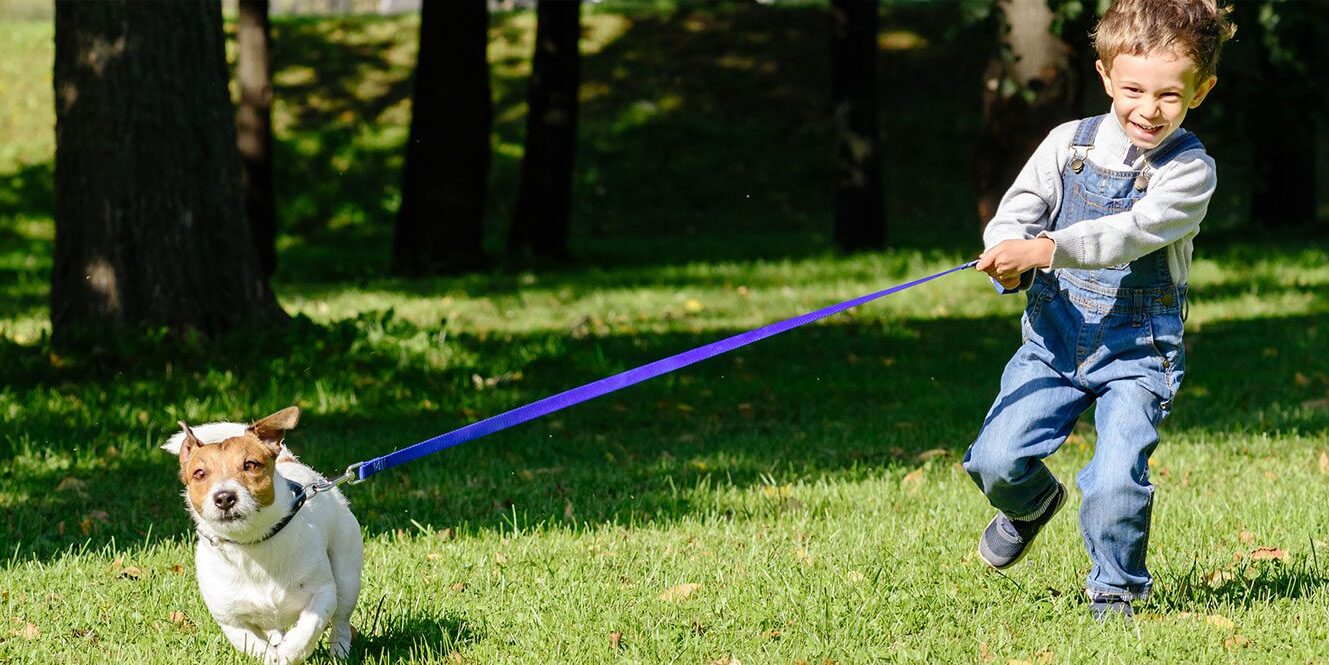Whether your dog walks amazing on a leash or is a complete frustration whenever that walk begins, here are 9-ideas to help your dog walks improve on leash:
1.) Throw The Retractable Leash Away!
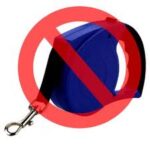 One of my most disliked invention is the retractable leash. While it is convenient because it rarely tangles, it is a tool that only leads to bad habits in a dog. This device was designed for the dog to walk you opposed to you walking the dog. It is designed for the dog to walk in front of you while also pulling on the collar/leash. While it can be comfortable to hold, the first advice we always give is to throw this out!
One of my most disliked invention is the retractable leash. While it is convenient because it rarely tangles, it is a tool that only leads to bad habits in a dog. This device was designed for the dog to walk you opposed to you walking the dog. It is designed for the dog to walk in front of you while also pulling on the collar/leash. While it can be comfortable to hold, the first advice we always give is to throw this out!
2.) Purchase A Short, Inexpensive, Nylon Leash
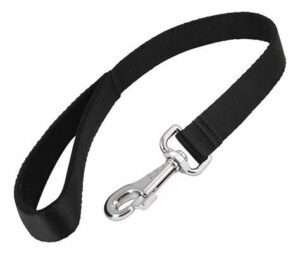 This tool is the perfect leash for teaching a loose lead. You do not want the dog to be able to pull you. So having a short leash will not only create proper distance to you, but it will also allow you to lead the walk & teach the dog to look to you during the duration of the walk.
This tool is the perfect leash for teaching a loose lead. You do not want the dog to be able to pull you. So having a short leash will not only create proper distance to you, but it will also allow you to lead the walk & teach the dog to look to you during the duration of the walk.
3.) Pull Up…Not Back
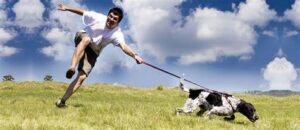 When your dog pulls on the leash do not pull back. This technique is a natural reaction when a dog pulls us so we don’t fall over. However, when training a retrieving/hunting dog this motion is actually taught to create resistance. It teaches the dog to continue to pull to create more traction & friction so when you let go or it breaks free it shoots out quickly. This is a instinct in a dog to pull when it feels that tension. Instead of pulling back, pull up! With a short lead this is easy to do. Simply pull up. The dog will lose its traction & after a few up pulls it will start looking to you. We are NOT encouraging you to choke your dog so do not lift high enough to lift your dog off the ground. A pulling dog finds its strength in putting the head down & pulling from the shoulders essentially while driving its legs. When you pull the head back up it loses that momentum & force. The pulling should then subside. The pull up method is extremely successful with harness wearers especially. Watching body language like a dog having the head down can help alleviate pulling as you can stop the issue before it starts if you are paying attention.
When your dog pulls on the leash do not pull back. This technique is a natural reaction when a dog pulls us so we don’t fall over. However, when training a retrieving/hunting dog this motion is actually taught to create resistance. It teaches the dog to continue to pull to create more traction & friction so when you let go or it breaks free it shoots out quickly. This is a instinct in a dog to pull when it feels that tension. Instead of pulling back, pull up! With a short lead this is easy to do. Simply pull up. The dog will lose its traction & after a few up pulls it will start looking to you. We are NOT encouraging you to choke your dog so do not lift high enough to lift your dog off the ground. A pulling dog finds its strength in putting the head down & pulling from the shoulders essentially while driving its legs. When you pull the head back up it loses that momentum & force. The pulling should then subside. The pull up method is extremely successful with harness wearers especially. Watching body language like a dog having the head down can help alleviate pulling as you can stop the issue before it starts if you are paying attention.
4.) Make Sudden Course Changes
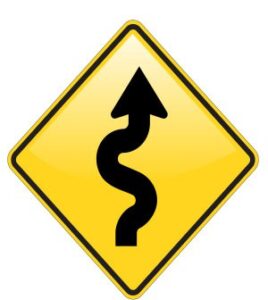 Dogs pull when they decide they want to go somewhere, pursue something, or smell something. What I tell families often is to make their walks fresh, new, & unpredictable. Sudden course corrections mid-walk for a puller is a fantastic tool to keep them guessing. You could be walking down a sidewalk & mid-block turn & go the opposite way or cross the street when they don’t expect it. Continue to change directions for a puller. Even if you look strange to onlookers because you may be walking back & forth or in a serpentine pattern, it is a great learning experience for your dog. Even if your dog isn’t a puller, random walks & new adventures are exciting even for a seasoned walker. Keeping walks mentally stimulating is the whole point of the walk so keep it a focus!
Dogs pull when they decide they want to go somewhere, pursue something, or smell something. What I tell families often is to make their walks fresh, new, & unpredictable. Sudden course corrections mid-walk for a puller is a fantastic tool to keep them guessing. You could be walking down a sidewalk & mid-block turn & go the opposite way or cross the street when they don’t expect it. Continue to change directions for a puller. Even if you look strange to onlookers because you may be walking back & forth or in a serpentine pattern, it is a great learning experience for your dog. Even if your dog isn’t a puller, random walks & new adventures are exciting even for a seasoned walker. Keeping walks mentally stimulating is the whole point of the walk so keep it a focus!
5.) Walk In Front
 Once your dog learns to walk on a leash without pulling, it is important to be a step ahead of them. Have them sit & stay before beginning the walk. Then begin the walk by you taking a step first then gently pulling while saying a command like “come”. If they immediately bolt ahead then put them back into a sit/stay & try again. Walking in front of your dog allows you to be seen by them with their focus on your body language & commands opposed to them leading. You should also be the first one out of the door & the first one back in every time. The dog’s place on a walk is beside you with their head even with you & their body behind you.
Once your dog learns to walk on a leash without pulling, it is important to be a step ahead of them. Have them sit & stay before beginning the walk. Then begin the walk by you taking a step first then gently pulling while saying a command like “come”. If they immediately bolt ahead then put them back into a sit/stay & try again. Walking in front of your dog allows you to be seen by them with their focus on your body language & commands opposed to them leading. You should also be the first one out of the door & the first one back in every time. The dog’s place on a walk is beside you with their head even with you & their body behind you.
6.) Give Yourself Enough Time
 I recommend each walk to be a minimum of 30-minutes to a full-hour. However, the specific needs for each Doodle is different. Two hours of mental stimulation is needed for Doodles each day, but some of that can be done outside of exercise. Dogs, like humans, are diurnal, so taking walks in the morning is ideal for them. When this isn’t possible, an evening walk is better than no walk.
I recommend each walk to be a minimum of 30-minutes to a full-hour. However, the specific needs for each Doodle is different. Two hours of mental stimulation is needed for Doodles each day, but some of that can be done outside of exercise. Dogs, like humans, are diurnal, so taking walks in the morning is ideal for them. When this isn’t possible, an evening walk is better than no walk.
7.) How To Reward During Walk
 After your dog has maintained the proper state of mind during the walk, reward them by allowing them to relieve themselves, sniff around, get a treat, & your direct affection. You also decide when the reward time is over. It should always be only a quarter of the time of your walk & no more.
After your dog has maintained the proper state of mind during the walk, reward them by allowing them to relieve themselves, sniff around, get a treat, & your direct affection. You also decide when the reward time is over. It should always be only a quarter of the time of your walk & no more.
8.) Keep Leading
 When you get home, the same principles you expect on leash should continue in your home. If you don’t make your Doodle wait to be called out of the crate & instead let them come bolting out then their overall discipline will be affected on their walks. If you don’t make them sit & stay when you feed them & don’t let them approach until you’ve said “ok” then it will affect their walks. If they are allowed to obsess over a toy like a ball instead of you putting it away & only taking it out during fetch time then it will affect your walk. Leadership can’t just be on a walk. The same principles of getting them to look to you need to continue throughout the entire day when you are present.
When you get home, the same principles you expect on leash should continue in your home. If you don’t make your Doodle wait to be called out of the crate & instead let them come bolting out then their overall discipline will be affected on their walks. If you don’t make them sit & stay when you feed them & don’t let them approach until you’ve said “ok” then it will affect their walks. If they are allowed to obsess over a toy like a ball instead of you putting it away & only taking it out during fetch time then it will affect your walk. Leadership can’t just be on a walk. The same principles of getting them to look to you need to continue throughout the entire day when you are present.
9.) Walks = Work. Work = Reward.
 Reward the hard work by feeding your Doodle after the walk. By providing the meal after the walk, you are allowing the dog to “work” for food. They will quickly begin to learn that the walk will turn into mealtime. This is a great training tool not just when they are a puppy, but throughout the entire dogs life. Routine is a dog’s best friend outside of you!
Reward the hard work by feeding your Doodle after the walk. By providing the meal after the walk, you are allowing the dog to “work” for food. They will quickly begin to learn that the walk will turn into mealtime. This is a great training tool not just when they are a puppy, but throughout the entire dogs life. Routine is a dog’s best friend outside of you!
Bonus Pro Tip – Always bring bags on your walk & pick up after your dog. Be a good example to your dog & to the community by being a stellar dog walker!

Robby Gilliam
Owner/ Breeder/Lead Trainer
Mountain View Doodles ©

